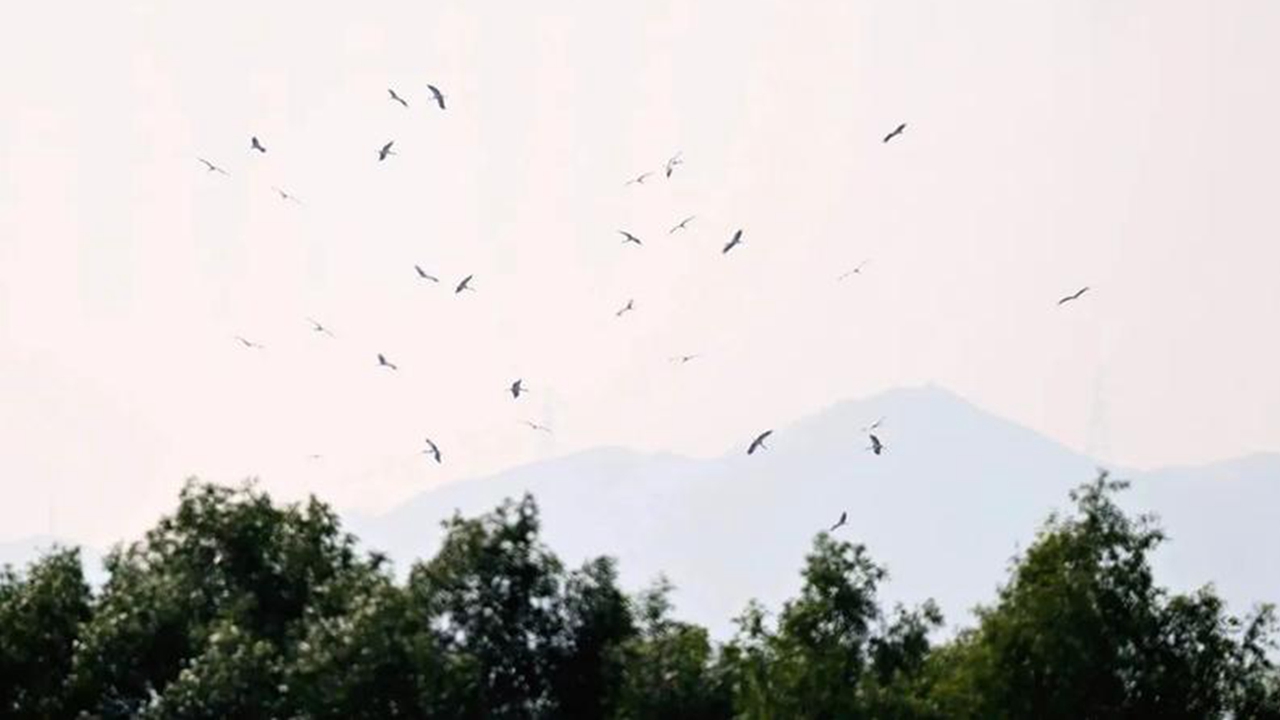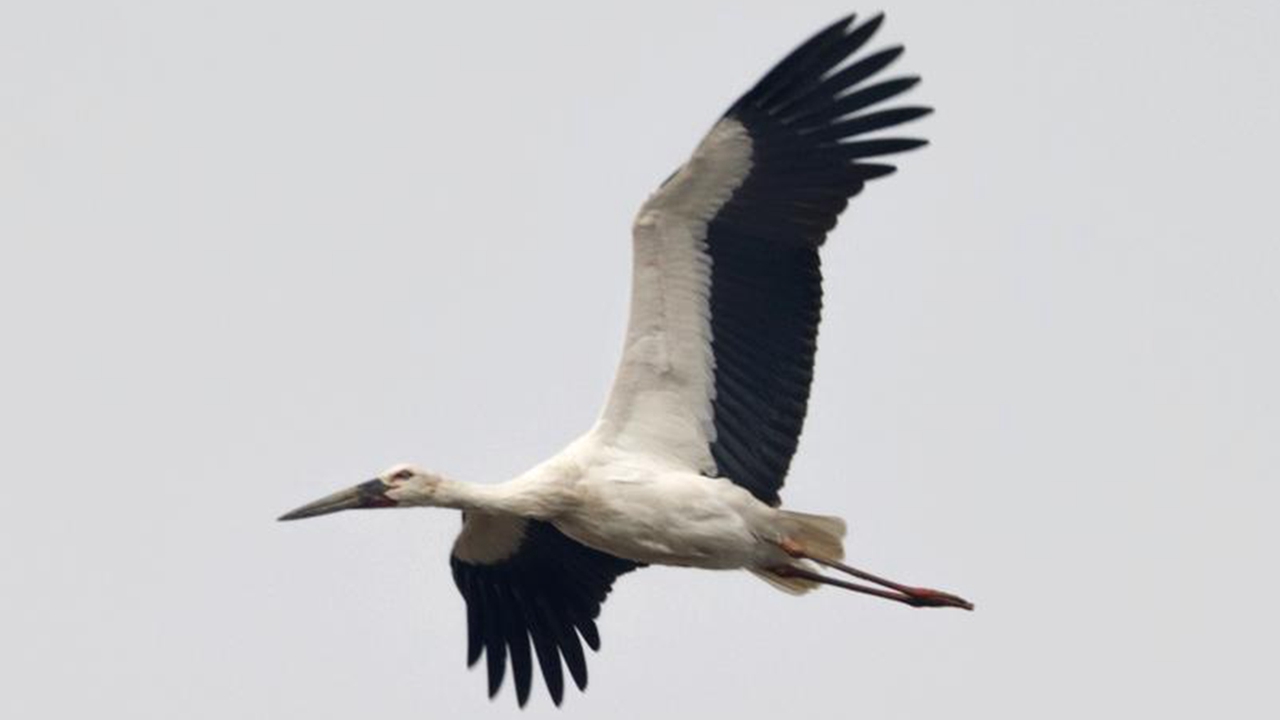Oriental white storks spend winter in city
Writer: Wang Jingli | Editor: Zhang Chanwen | From: Shenzhen Daily | Updated: 2022-12-23
A+ A- Print
A total of 29 oriental white storks (Ciconia boyciana), under first-class national protection, were found hovering over Futian Mangrove Nature Reserve on Wednesday morning, according to information released by the management office of the Guangdong Neilingding Futian National Nature Reserve.
The flock of birds was discovered by nature reserve’s staffers when they were checking on bird surveillance equipment Wednesday morning.

A flock of oriental white storks hovers over Futian Mangrove Nature Reserve on Wednesday morning. Courtesy of the management office of the Guangdong Neilingding Futian National Nature Reserve
The oriental white stork, also known as the giant panda among birds, and is listed as endangered by the International Union for Conservation of Nature. It has sharply contrasting black and white feathers on its wings, a black bill, red legs and the bare skin around their eyes, eyeline and throat is vermilion.
The oriental white stork is also a migratory bird and is mainly distributed in Northeast China, Inner Mongolia, Japan and North Korea in the summer, and in East and South China in the winter. The first time this bird has been spotted in Guangdong Provinces was in the 1990s in Zhuhai.
In recent years, the bird has been discovered in Shenzhen, Zhanjiang and Jiangmen, but only a few.

A oriental white stork is spotted at Futian Mangrove Nature Reserve.
This is said to be the first time for the Futian Mangrove Nature Reserve to discover a flock of oriental white storks over the past 30 years.
Futian Mangrove Nature Reserve is located in the northeast part of Shenzhen Bay. It runs about 9 kilometers long along the coastline, with a total area of 367.6 hectares, including 352.7 hectares of wetlands.
In recent years, the nature reserve has conducted ecological restoration projects to provide a better habitat for migratory birds to spend winter.
At present, Futian Mangrove Wetland boasts 13 species like black-faced spoonbill that are under national first-class protection and 44 species under national second-class protection, according to the nature reserve.